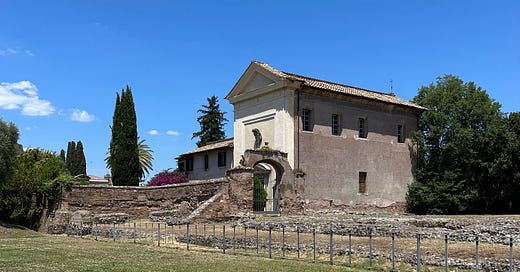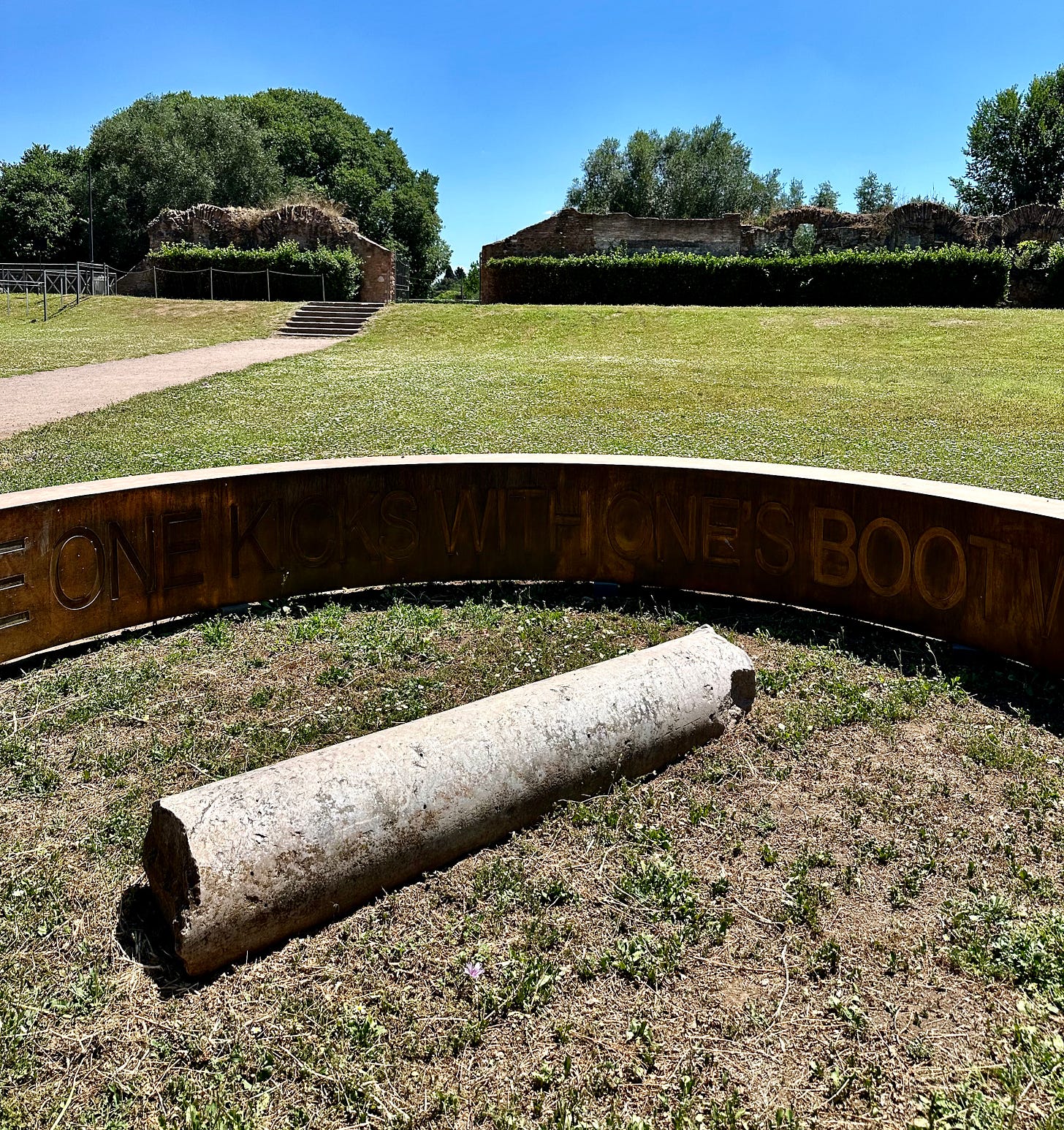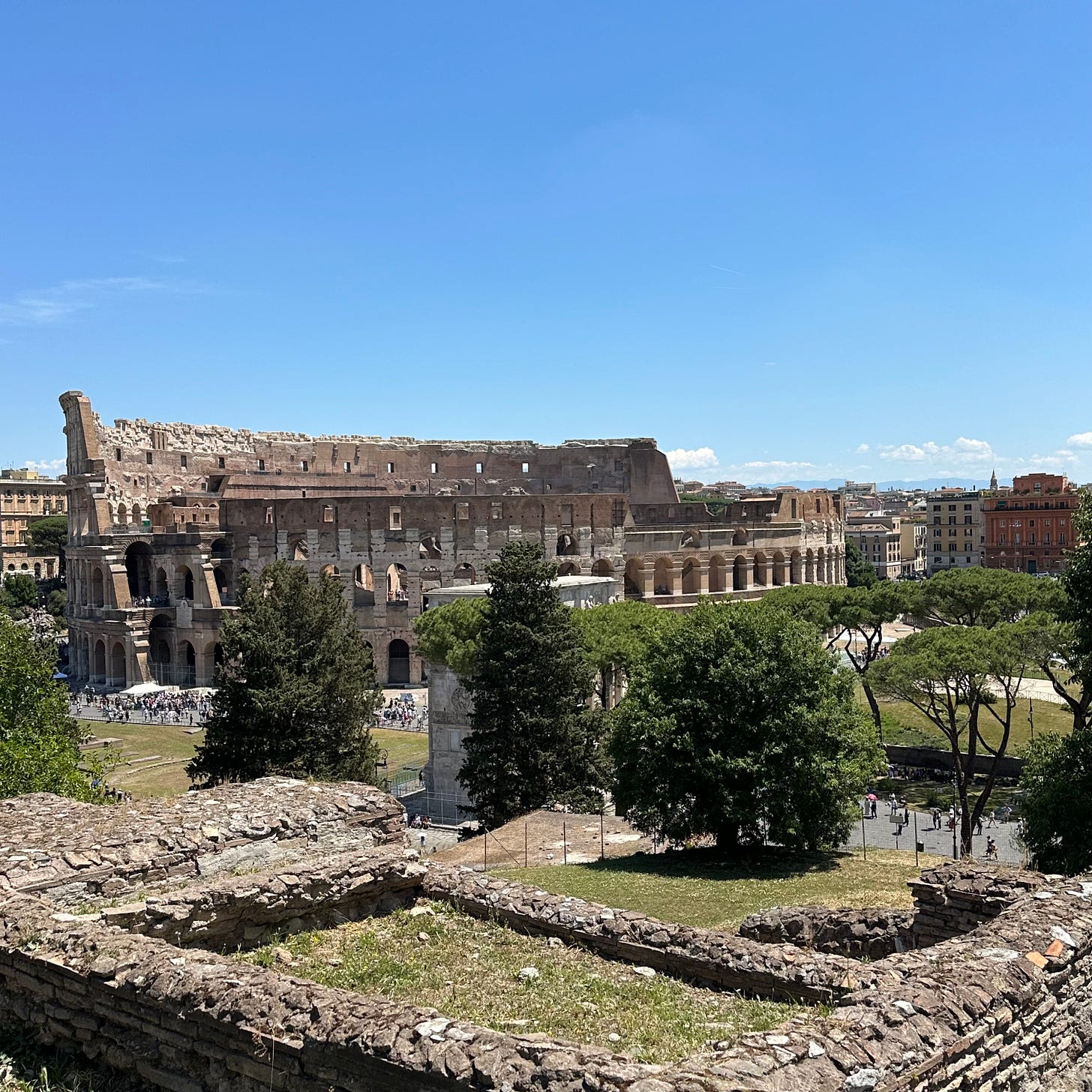All of a sudden the Roman air is warm and thick with the scent of oleander and jasmine and the bougainvillea is exuberantly in bloom. Summer seems to arrive all at once every year, and once again here we are. In the last week I’ve shown folk around the Colosseum and the Vatican negotiating the crowds which, I will immodestly admit, does take a fair amount of practice (next week marks twenty-three years since I first started giving tours, that’s half of my life which I think we can agree is indeed a fair amount of practice). But there are also plenty of other extraordinary sites where I’ve taken folk this week where we were often entirely alone.
Even the Palatine and the Forum, part of the inestimable Parco Archeologico del Colosseo, can easily be visited in peace, and on Thursday morning I took a route through olive groves to the Vigna Barberini on the Palatine with its fabulous view of the Colosseum from the remains of the base of the temple of Elagabalus. By the temple is the little seventeenth century rebuilding of the church of St Sebastian, and in the centre of what was the vineyard of the Barberini, amid ruins of part of the Imperial palace is an installation created by Francesco Arena in 2020 of which I’m very fond. It is a bronze ring around an abandoned fragment of a marble column. Inscribed on the inside of the ring is a quotation from To the Lighthouse regarding Mr Ramsay’s contemplation of the impermanence of human endeavour: the blip of mortal existence in the incomprehensibly vast expanse of geological time. It reads: The very stone one kicks with one’s boot will outlast Shakespeare.
Here is the fuller quotation:
“It is permissible even for a dying hero to think before he dies how men will speak of him hereafter. His fame lasts perhaps two thousand years. And what are two thousand years? (asked Mr Ramsay ironically, staring at the hedge). What, indeed, if you look from a mountain top down the long wastes of the ages? The very stone one kicks with one’s boot will outlast Shakespeare. His own little light would shine, not very brightly, for a year or two, and would then be merged in some bigger light, and that in a bigger still.”
And so the column lies—inexorable and incorruptible—in its bronze ring inscribed with Virginia Woolf’s phrase, unapologetically taking its place amid the temporal kaleidoscope of the temple of Elagabalus, the church of St Sebastian, and the vineyard of the Barberini, overlooking the Colosseum. A battery of centuries coexisting in a fragmented collage of human activity with at its centre the unremitting materiality of stone. I think Virginia Woolf would have approved.







Brilliant and informative as always. Thank you.
Wonderful to read about this brass ring sculpture at the Roman Forum